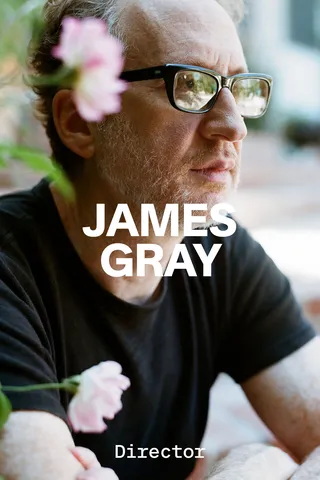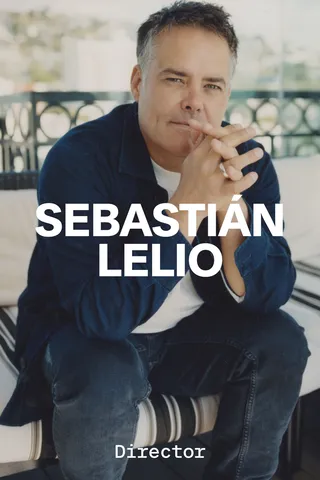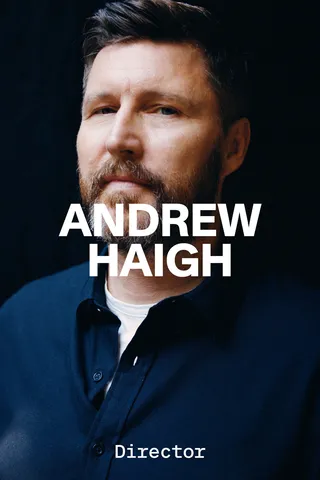Pablo Larraín
Pablo Larraín is a powerhouse of contemporary Chilean cinema whose canon of films includes multiple horror-tinged black comedies that explore his country’s bloody political past, from the deliciously seedy drama Tony Manero (2008) to the monochrome fable El Conde (2023). The Oscar-nominated director, screenwriter and producer has also created a glittering portfolio of English-language biopics about strong women ensnared in patriarchal power structures, working with Natalie Portman on Jackie (2016), Kristen Stewart on Spencer (2021) and Angelina Jolie on the upcoming Maria Callas bio-drama Maria. Larraín’s personal film selection for Galerie includes two genre-expanding documentaries about homicidal tyrants—Patricio Guzmán’s Nostalgia for the Light (2010) and Joshua Oppenheimer’s The Act of Killing (2012)—plus a rich tapestry of dramas, from Alexander Sokurov’s historical pageant Russian Ark (2002) to Andrea Arnold’s bittersweet coming-of-age tale Fish Tank (2009). “Most of these films have something in common, which is time and memory,” says Larraín. “These are the subjects that have moved me the most as a person and as a filmmaker, too.”
my FILM LIST
Click each title to discover our curator’s notes and where to watch
I talked to Werner Herzog about this in Telluride last year. He was kind enough to come to the lunch we had for my last movie, El Conde, and I sat next to him. Because when I first saw this film and other movies from him and other German directors, I decided to become a filmmaker. So it’s a very specific and significant movie for me.
Over the years I’ve come to understand why it affects me so much. It’s not only because it’s beautiful, but it’s also crazy—and I’m an opera lover as well. As Herzog says in his book Conquest of the Useless: Reflections from the Making of “Fitzcarraldo,” there’s something useless that the character is trying to achieve. I think it’s a very beautiful metaphor for cinema.
Because when you make a movie, you’re pushing a ship over a mountain. There’s an absurdity in it, but you believe in something greater. You think you might be doing something that has substance, that is meaningful, which is also true in the case of the character, who dreams of having an opera house in the jungle with Caruso singing. That exercise of a crazy German dressed in white, trying to convince people of what he’s doing, I think it’s a great cinematic achievement.
What is also very funny is that there is a documentary about the making of the film that is really great, too. It’s not just the film but also what happens around the film that became a mythology. For me it’s so similar to the absurdity of trying to convince an investor, trying to seduce the people who could become your cast. It’s a movie that I’ve seen many times, and I had the chance to say that to Herzog, who gave me a smile back. That’s all he did, and it was perfect.
Just the idea of having this fictional French diplomat who walks through the Hermitage Museum in Russia and travels through two centuries is a very bold exercise of cinema. Back then it was insane that they did it in one single Steadicam take lasting nearly 87 minutes. It’s a technical achievement, and I have always been very curious about how the Steadicam operator could do it. I’ve seen movies made in one take, but never in Steadicam. I’ve worked with many Steadicams, and I’ve never seen anything longer than 15 minutes—the operator is already exhausted and has to stop. So 87 minutes feels like a real marathon. But besides that, I think it’s an existential journey through the history of a country.
He had nearly 2,000 actors spread throughout different rooms, playing different roles in different centuries. That journey through the museum is about time. He was able to bring two centuries into 90 minutes and to do it in a way that’s not just a cool technical stunt in one take. When you do that and it really works, as in this case, it makes you think that you’re actually there, because you are walking behind this man.
You see all these people with these dances, with live orchestras, and it’s something that has stayed with me. I learned a lot about Russian culture and Russian art. But there’s something in the title—the idea of the ark, of this metaphorical ship that can just travel over the years. It’s an exercise of time, of history, of art and of culture. There are very few exercises that can capture a narrative spanning 200 years of a culture with such beauty, elegance and sophistication.
{{ All Items }}I was very impressed when I saw this film for the first time. It presents a moral problem inside a Mennonite community in Mexico, where a couple tries to stay in the religion but has to deal with their own desires. And that breaks the rules in a way that I think is beautifully filmed.
They used anamorphic LOMO lenses made by the Soviet Union—the same brand that Tarkovsky used—which create an abstract image with a dreamlike quality. They absorb and frame the light in a very particular way. Reygadas used wide angles very close to the subjects, so you’re able to be very near them. It’s a movie of long takes that elevate the film into something very spiritual.
I connected it with Ordet, the Carl Theodor Dreyer film—I think Reygadas is doing a very respectful homage. It was fascinating how the Mexicans interacted with this religious community, to see the Latin-American perception of that. But the most beautiful element of this film is the tone—the narrative and the sense that you’re seeing something with a very strong spiritual quality. I admire that, and it is a movie I will never forget.
{{ All Items }}I have a lot of admiration for Olivier Assayas. That’s how I discovered Kristen Stewart, actually, through Personal Shopper. But this film, Summer Hours—there’s something that happens with the death of a parent. The natural sensation is obviously grief and memory and pain, but also there’s the unavoidable idea that you are the next one, right? Because that’s how life is. That passing of the previous generation means you are next. And that very specific sensibility is captured in this film, in a family that reunites after the parents are gone.
That’s what stayed with me when I saw this: the cycle of life and how it’s so beautifully executed. These siblings meet and try to deal with remembering someone who is gone, someone who brought them together, and that person’s not going to be there again. How are they going to move on in whatever’s next for them in life? It’s a meditation on family bonds and experiencing loneliness while being surrounded by others. There’s a reason for that title—the summer, the heat, the slow pace—and it made me think that you will become an adult only once your parents are not in this world anymore. That was a very moving and beautiful idea.
{{ All Items }}You’re gazing through the glass of an aquarium at lives that have been consigned to oblivion. All they can do is survive their own disenchantment. Sharing a similar feeling with Luis Buñuel’s The Young and the Damned, this hyperrealistic take on people trapped in a fish tank takes you into that house, to sit at the characters’ table, to breathe the air they breathe, and to hold their hands right when they want to jump into the void.
The metaphor of the fish tank, of these people being inside a world they cannot escape and where they can barely breathe because they’re drowning in that water, is so claustrophobic. They exist in an environment where love is related to survival. It’s a movie about being able to survive. It’s not even existential, it’s post that. It’s probably about poverty and domestic violence, about rage against an unjust capitalist system that renders people forgotten. And that’s where Luis Buñuel comes in, because in Spanish The Young and the Damned is called Los olvidados, which means “The Forgotten,” which connects because these people are forgotten by the system.
Fish Tank is realistic, it’s beautiful and it’s very scary. I come from Chile, where unfortunately there’s a lot of unfairness and poverty, but this film is set in England, a wealthy country. It’s not that I didn’t know, but it was very sad to discover that in those countries, like in the United States or any other country, poverty is often sublimated by a facade of luxury.
{{ All Items }}Patricio Guzmán is a man I’ve admired for many years. He’s Chilean but has lived in France for a long time. He has done very relevant and substantial work in documentary, analyzing and studying and filming the past of our country. Nostalgia for the Light is a very evocative description of memory, a new step for a man who has been around, knows what he’s doing and decided to reconsider this subject with a different sensibility. This is the work of someone who has reached a very high level of mastery.
It’s about the desert in the north of Chile, where many people were buried during the dictatorship and were considered—they are still considered—people who were disappeared. They’re the victims who were assassinated by the dictatorship and then buried. At the same time, between 80 and 90 percent of the observation of the galaxies and the cosmos is done in the Atacama Desert—some of the biggest observatories are there. So what Guzmán creates is an interaction between the galaxies, the sky, the cosmos, the observation and the people still searching for family members spread across this vast, dry desert.
It’s a very poetic description of time, both of human splendor through technology and what we are able to do but also the human misery that is hidden in that desert. Guzmán wonders, Can we turn those telescopes, which look to the sky for science and humanity, to learn about and discover the desert? Can we use them to find something else we’re looking for? That interaction is incredibly beautiful. It’s a very evocative, poetic documentary. It really, really affected me. I think the title is very efficient. It’s a nostalgic state about light, and there’s something continuous: The documentary lets you think that people will always be wondering and searching for galaxies and also for the human condition. That duality is very interesting and beautiful.
{{ All Items }}Impunity has been a subject of my own work in a number of movies, but usually the one who commits the crime denies it or tries to avoid the subject. And in this film, those who were responsible for the genocide are right there, looking at the camera, proud of what they did. So it’s on another scale. And I think Joshua did something very interesting, taking it to a place where it becomes almost a farce on some level. There’s absurdity in this historical narrative. I’ve never seen anything like it. I’ve never seen a movie where mass killing is so somehow accepted, and that creates a very specific type of horror that’s very scary and creates discomfort and distress in the audience—in my case, in myself. So I thought it was a very interesting achievement and a very complicated and difficult movie to digest. Because of that, it becomes a cinematic political weapon. There are very few examples where cinema can actually say something so clear about a political process. This movie has that.
{{ All Items }}Boyhood breaks all rules of reality with one of the most realistic approaches to human life that I’ve ever seen. Filmed over 12 years, this film follows a boy who grows up in front of you and with you. It’s moving and scary at the same time. It makes you witness the fascinating process of a body exploding into the uncomfortable and original reality of the self.
I’ve made a lot of period movies and have always felt that maybe cinema is the most interesting time machine that we have created as culture. Since smartphones arrived we can look back and do a similar exercise, but it’s not a motion picture. There’s something in the idea of this family growing with you that has made me think about my own personal growth and of my own kids and the people I love in a way I’ve never felt from another movie. You become a witness of a very specific process. I would’ve stayed in that cinema for another two hours to see what’s next—Boyhood 2.
It’s an exercise of time. There’s a very specific sensibility you have to have as a filmmaker in order to film 10 days a year for 12 years and understand what you’re doing over that time span. I admire the intelligence and substance of that exercise. It’s very difficult to show up on a set and be able to understand where you are, where you’re going, and make the audience part of that family in such a unique way. I’m not talking about just simple empathy, because I’m not very into that. I’m talking about a real empathy, because it affects you and makes you look around your own world and life.
{{ All Items }}Unknown and indeterminate memories—those that chase our subconscious—can also be collective. That’s what I’ve learned from this movie. A vast pool of associations, intersections, existential mazes and time arcs that can be contradictory and mesmerizing at the same time. We all experience the same reality, but it’s our perception of it that makes it unexplainable. That’s exactly why you can’t really explain this movie unless you perfectly remember your first day in this world.
Something I respect and admire about this film is Apichatpong’s ability to make me feel that I was connecting and engaging with a form of collective memory, where my subconscious can be related to the subconsciouses of other people. The idea of that collective reality is something we can’t really explain. Apichatpong is one of the very few filmmakers whose sensibility, because of the way that he crafted the film—how he used the sound, space, framing, timing and obviously lighting—creates a sensation of how strange reality can be in a way that includes me. It made me feel less lonely because of that.
{{ All Items }}
RELATED MATERIAL
Essays, interviews and other connections
![Getting Lucid With Richard Linklater]() Getting Lucid With Richard Linklaterread
Getting Lucid With Richard LinklaterreadTheories on memory, time and dreaming from cinema’s leading chronologist
By Kaleem Aftab
![Sound Sleeper]() Sound Sleeperread
Sound SleeperreadApichatpong Weerasethakul’s latest feature depicts an encounter with the uncanny that unravels a rational mind
By A. S. Hamrah
![The Architecture of Sound]() The Architecture of Soundread
The Architecture of SoundreadIn Tepoztlán, Mexico, idyllic postproduction oasis Splendor Omnia gives rise to some of cinema’s greatest soundscapes
By Alistair Tremps
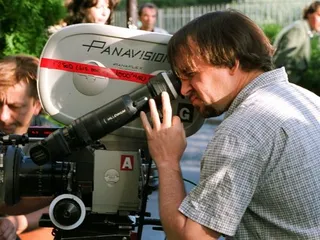
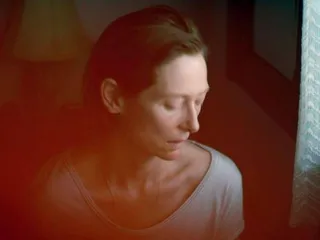
_320x0.webp)
